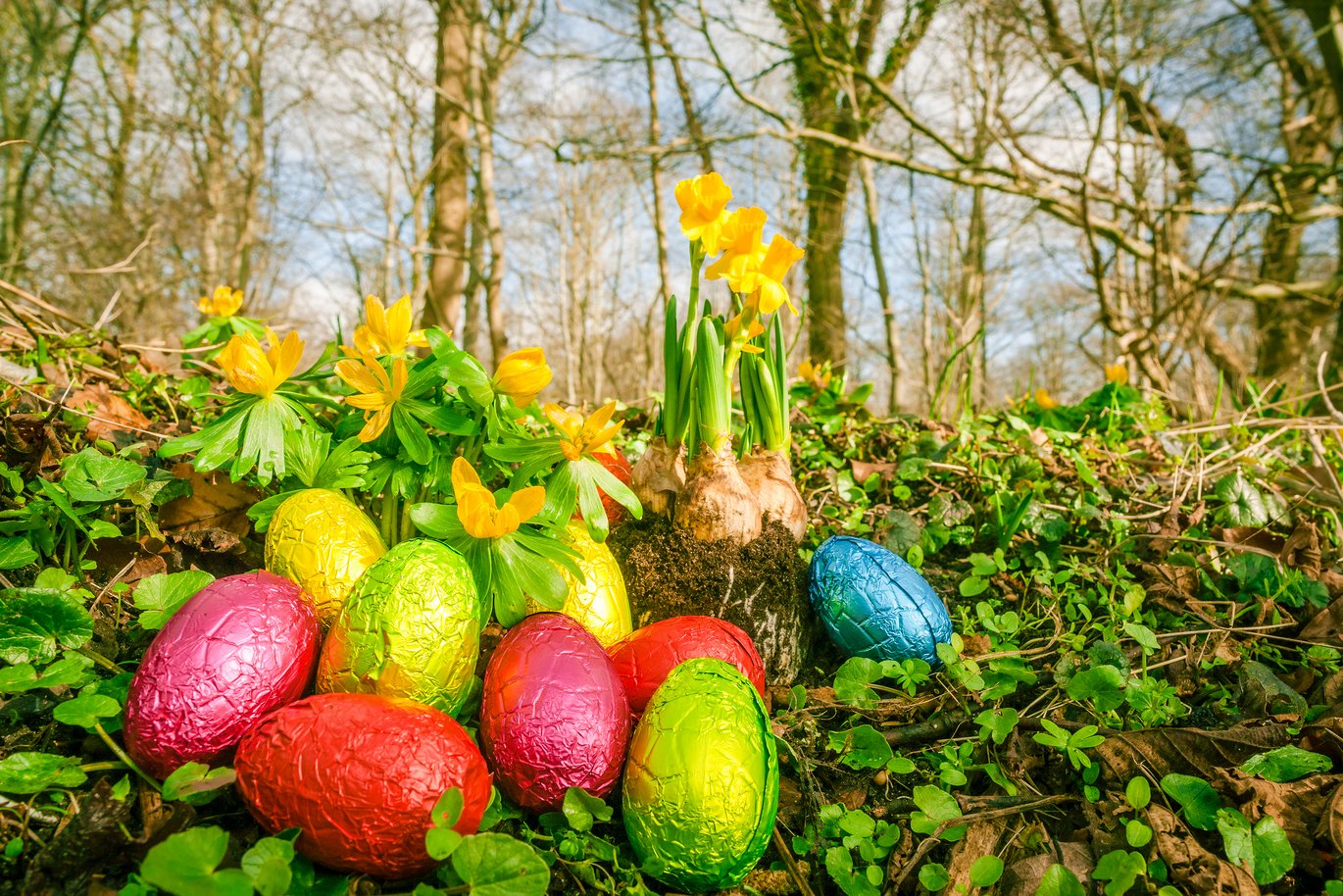Danish Easter Traditions
Easter in Denmark, or Påske, is a wonderful blend of traditions, food, activities and festive decorations. In this article we will take a closer look at how Easter is celebrated in Denmark.

Have you noticed the colorful flowers popping up everywhere? Vintergækker (snowdrops), erantis (winter aconite), and påskeliljer (daffodils) are blossoming, and after a long dark winter, the small flowers get Danes very excited. It is also a lovely reminder that spring is just around the corner.
Danes will celebrate the new season by decorating their houses with green and yellow décor, painted eggs, and a parade of rabbits and chicken figurines. You may even spot egg-decorated trees in people’s garden.
The Easter holiday in Denmark typically includes Maundy Thursday, Good Friday, Easter Sunday, and Easter Monday. It's common for people to take additional days off to enjoy a longer break, with some even starting from the Monday before Easter since schools are also off then.
With Maundy Thursday, Good Friday, Easter Sunday and Easter Monday being national holidays, many Danes find Easter a good opportunity for a short escape to their summer cottages. The city might therefore seem quieter than usual and it’s worth checking the opening hours of shops etc. Churches have Easter services on, but it is not a tradition for many Danes to attend church during the Easter holidays. A much more common tradition is the Easter lunch….
Easter Lunch - Påskefrokost
Easter Sunday usually gathers the family together for lunch. The lunch menu often consists of some traditional Danish dishes such as pork meatballs, lamb and ‘skidenæg’ (hardboiled egg in a mustard sauce). Other popular dishes are fish fillets, herring with curry salad, eggs, salmon and liver pâté - most of them served on the beloved rye bread.
To flush down the delicious food, Danes like to serve Påske Bryg (Easter Brew) – a strongly brewed beer only sold around Easter time, and snaps (a distilled spirit). You may have heard of snaps – you may even have tried it and thought your throat was on fire, but it is a staple at Easter lunches and people will cheerfully say ‘SKÅL’ and take a sip of the strong alcoholic beverage in between eating their topped ryebread.
Gækkebrev
A fun Danish Easter tradition is sending a letter called a ‘gækkebrev’ (the name ‘gække’ refers to the snowdrop flowers, which are often sent out with the letter). The tradition of sending gækkebreve dates back to the 16th century where a gækkebrev was more like a valentine letter with a riddle and a poem to someone special.
Gækkebrev later developed into a ‘teasing letter’ sent to a friends or family in the weeks leading up to Easter. The letter features beautiful cut-outs and a poem that often goes, “gæk gæk gæk mit navn det står med prikker, pas på det ikke stikker” (translated to ‘my name is written with dots, be careful it doesn’t prick you). The number of dots corresponds to the number of letters in the sender’s name. The recipient's task is to guess who sent the gækkebrev. If they guess correctly, the sender owes them an Easter egg. If they fail to guess before Easter, they owe the sender an Easter egg. We dare you to send a gækkebrev to a colleague this Easter! 😊
Easter Activities
Easter offers a wonderful opportunity to be creative. Doing Easter crafts is a popular way of keeping everyone entertained during the holidays. Kids are also likely to also bring home Easter crafts from school or daycare.
One of the popular Easter activities is to ‘puste æg’ (blowing out eggs). This involves blowing out the egg yolk and white, leaving just the shell, which can then be delicately painted in various colors.
To blow out the egg successfully, you need to:
- Clean the egg thoroughly,
- Give it a little shake,
- Make a small hole in both ends of the egg,
- Put your mouth on the egg and blow like the wolf from The Three Little Pigs until the egg is released.
- You now have an eggshell ready for decorating, and an egg to make an omelet – win win!
Another eggy tradition, which also dates back centuries, and is mostly popular in southeastern Denmark, is to ‘trille æg’ (roll eggs). For this activity the eggs should be hardboiled, and their shell colorfully painted. The participants find a suitable hill (or make one if inside) and roll their egg down the hill. The participant with the egg that gets the furthest without cracking wins the game. Given the price of eggs in 2025, it is likely the non-cracked eggs will make it back to the lunch table.
Egg hunt
Ah the egg hunt. People will tell you it’s just for kids, but many adults get just as excited about finding the hidden chocolate tressures. The egg hunt, brought to you by the happy Easter bunny, is well-known to many people around the world. Danes love the tradition and on Easter Sunday the Easter bunny will therefore often hide one or more Easter eggs for the kids to find when they wake up.
We hope the Easter bunny makes it to your house as well, and we wish you all an enjoyable Easter break.
We look forward to seeing you around!